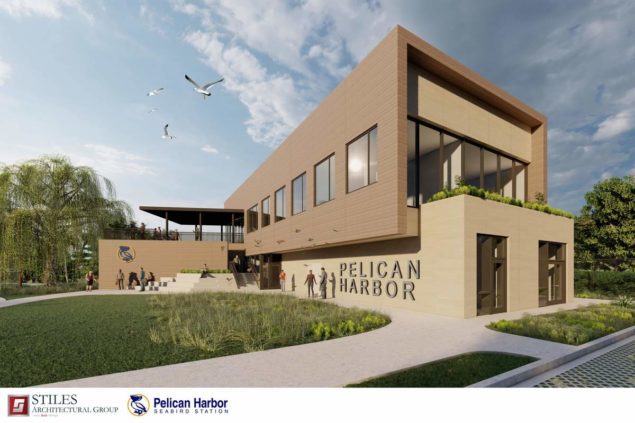|
Getting your Trinity Audio player ready...
|

With nearly 2,500 annual patients and growing, the bird and wildlife rehabilitation facility Pelican Harbor Seabird Station is building a new home.
The center is working with Stiles Architectural Group (SAG) to design a facility inspired by the nature that has made it a Miami landmark for birds and bird lovers alike. SAG, a division of 70-year-old full service real estate development and services firm Stiles, is the project architect.
Pelican Harbor Seabird Station and Deeks’ Wildlife Center, renamed in honor of the significant support and partnership by the Deeks Foundation, is located on the Little River in Miami only one mile from its current location on Biscayne Bay just off Miami’s 79th Street Causeway.
Built on 2.6 acres, the new 7,800-square-foot facility is nearly 6.5 times larger than the 950-square foot space it has maintained since opening in 1992. The center will house recuperating animals and provide education, with a rooftop terrace to host events and workshops.
“Pelican Harbor plays a critical role in the future preservation of Miami’s native wildlife and educational offerings,” said SAG project architect Nathan Hoofnagle, the lead architect on the project. “In designing the space, we aimed to create a refuge for the animals that would have the least impact on the environment and integrate seamlessly into its surroundings on the river.”
The center’s state-of-the-art design uses natural materials and offers a modern, open concept that easily integrates the structure within its natural context. Stiles aimed to preserve as many of the existing trees on the site as possible while also maximizing the views of the Little River from every angle of the two-story building.
“With volunteer support, youth education and funding a top priority, the design of Pelican Harbor had to be as functional for education and events as it is beautiful,” said Kevin Cruz, SAG president. “Our team was tasked with designing a space that would maximize water views, improve the visitor experience and create a more comfortable, usable setting for the staff and animals.”
Stiles’ minimalist design plans to reduce any potential environmental impact during and post construction. For example, the team uses native and low maintenance landscaping and pervious pavers that will allow water to flow through the surface. The second floor of the facility will house a 1,000-square-foot exhibition space and outdoor terrace overlooking the multipurpose event lawn, river walk and education ambassador animal exhibits.
Additionally, the project will be Green Globes certified, which is a nationally recognized green rating assessment, guidance and certification program.
For more information on Pelican Harbor Seabird Station, visit www.pelicanharbor.org/.





